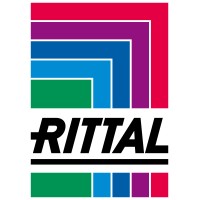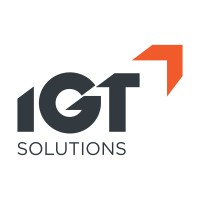
Scrum.org Company Cyber Security Posture
scrum.orgScrum.org, the Home of Scrum, was founded by Scrum co-creator Ken Schwaber as a mission-based organization to help people and teams solve complex problems. We do this by enabling people to apply Professional Scrum through training courses, certifications and ongoing learning all based on a common competency model. Our courses provide a hands-on learning experience led by Professional Scrum Trainers (PSTs) who are experienced practitioners, vetted for their knowledge and teaching ability and go through additional training before they can teach each course. All courses are maintained by course Stewards who work with the 340+ PST community members to leverage their collective expertise. Each PST brings their own real-world experience into the classroom while using a consistent set of learning materials. Scrum.org certification tests are globally recognized as tools to examine, enhance, and certify Professional Scrum knowledge. Tests are decoupled from training to validate people’s understanding whether learned in a Scrum.org class or in other ways. Scrum.org supports people wherever they are on their learning journey from beginner to highly experienced practitioner, helping them to grow over time with ongoing learning opportunities and resources. Community members share knowledge and gain new insights from each other leveraging forums, blogs and more.
Scrum.org Company Details
scrum-org
406 employees
429498.0
541
IT Services and IT Consulting
scrum.org
Scan still pending
SCR_1262484
In-progress
Between 900 and 1000
This score is AI-generated and less favored by cyber insurers, who prefer the TPRM score.
 Scrum.org Global Score
Scrum.org Global Score.png)

Scrum.org Company Scoring based on AI Models
| Model Name | Date | Description | Current Score Difference | Score |
|---|---|---|---|---|
| AVERAGE-Industry | 03-12-2025 | This score represents the average cybersecurity rating of companies already scanned within the same industry. It provides a benchmark to compare an individual company's security posture against its industry peers. | N/A | Between 900 and 1000 |
Scrum.org Company Cyber Security News & History
| Entity | Type | Severity | Impact | Seen | Url ID | Details | View |
|---|---|---|---|---|---|---|---|
| Scrum.org | Breach | 80 | 4 | 05/2016 | SCR24928522 | Link | |
Rankiteo Explanation : Attack with significant impact with customers data leaksDescription: Scrum.org, the Scrum certification and training site run by Scrum co-creator Ken Schwaber, suffered from a nasty security breach. The compromised information included users’ names, email addresses, encrypted passwords, the password decryption key, completed certifications, and their associated test scores. "No financial information was involved in this incident." They immediately confirmed the applicability of the vulnerability and followed all of our vendor’s instructions to ensure the vulnerability was resolved." | |||||||
Scrum.org Company Subsidiaries

Scrum.org, the Home of Scrum, was founded by Scrum co-creator Ken Schwaber as a mission-based organization to help people and teams solve complex problems. We do this by enabling people to apply Professional Scrum through training courses, certifications and ongoing learning all based on a common competency model. Our courses provide a hands-on learning experience led by Professional Scrum Trainers (PSTs) who are experienced practitioners, vetted for their knowledge and teaching ability and go through additional training before they can teach each course. All courses are maintained by course Stewards who work with the 340+ PST community members to leverage their collective expertise. Each PST brings their own real-world experience into the classroom while using a consistent set of learning materials. Scrum.org certification tests are globally recognized as tools to examine, enhance, and certify Professional Scrum knowledge. Tests are decoupled from training to validate people’s understanding whether learned in a Scrum.org class or in other ways. Scrum.org supports people wherever they are on their learning journey from beginner to highly experienced practitioner, helping them to grow over time with ongoing learning opportunities and resources. Community members share knowledge and gain new insights from each other leveraging forums, blogs and more.
Access Data Using Our API

Get company history
.png)
Scrum.org Cyber Security News
R. J. Corman's Christina Booth-Jackson Recognized by Railway Age as "2024 Women in Rail" Honoree
Christina Booth-Jackson, Vice President of Information Technology at R. J. Corman Railroad Group, has been recognized by Railway Age as one of ...
Free Online Cyber Security Courses & Certifications For Beginners in 2025
Cloud Computing made simple with real world practical examples. What You Will Learn: Understand the IaaS options including virtual machines on shared ...
Top 5 certifications for Scrum Masters
The gold standard in Scrum Master certification is from Scrum.org. Ken Schwaber is a co-creator of Scrum, co-author of The Scrum Guide ...
Top 16 agile certifications available today
Agile project management is increasingly how business gets done. The skills acquired through these agile certifications will put you on a path toward career ...
The Scrum Guide Gets An Update
The defining document of scrum, the Scrum Guide, has been updated for the first time in three years. While the update is relatively small, it's very meaningful.
How I got started: Cloud security engineer
In this exclusive Q&A, we spoke with Dave Hatter, a cloud security expert with 30 years of experience in IT as a software engineer, cybersecurity consultant ...
Embracing Agile
Agile innovation methods have revolutionized information technology. Over the past 25 to 30 years they have greatly increased success rates in software ...

Scrum.org Similar Companies

Atos
This account discusses mainly (but not exclusively) the activities of Tech Foundations - the Atos Group business line leading in managed services, focusing on hybrid cloud & infrastructure, employee experience and technology services, through decarbonized, automated and AI-enabled solutions. Eviden

Rittal Data Centre
World leader in enclosure and IT infrastructure technology, Rittal continues to expand its product offering, providing data centre solutions and services in Australia and New Zealand. Famous for highest quality, German engineering, Rittal is a single source provider of complete data centre infras

IGT Solutions
IGT Solutions is a next-gen customer experience (CX) company, defining and delivering AI-led transformative experiences for the global and most innovative brands using digital technologies. With the combination of Digital and Human Intelligence, IGT becomes the preferred partner for managing end-to-

Virtusa
Virtusa Corporation provides digital engineering and technology services to Forbes Global 2000 companies worldwide. Our Engineering First approach ensures we can execute all ideas and creatively solve pressing business challenges. With industry expertise and empowered agile teams, we prioritize exec

Sogeti
Part of the Capgemini Group, Sogeti makes business value through technology for organizations that need to implement innovation at speed and want a local partner with global scale. With a hands-on culture and close proximity to its clients, Sogeti implements solutions that will help organizations wo

ThunderSoft
ThunderSoft is a provider of operating system technologies, superior products and solutions, experts in mobile, IoT, automotive, and enterprise. Founded in 2008, through ThunderSoft’s expertise in edge intelligence and operating systems including Android, Linux, Windows and others, a profound mid

Frequently Asked Questions (FAQ) on Cybersecurity Incidents
Scrum.org CyberSecurity History Information
Total Incidents: According to Rankiteo, Scrum.org has faced 1 incidents in the past.
Incident Types: The types of cybersecurity incidents that have occurred include ['Breach'].
Total Financial Loss: The total financial loss from these incidents is estimated to be {total_financial_loss}.
Cybersecurity Posture: The company's overall cybersecurity posture is described as Scrum.org, the Home of Scrum, was founded by Scrum co-creator Ken Schwaber as a mission-based organization to help people and teams solve complex problems. We do this by enabling people to apply Professional Scrum through training courses, certifications and ongoing learning all based on a common competency model. Our courses provide a hands-on learning experience led by Professional Scrum Trainers (PSTs) who are experienced practitioners, vetted for their knowledge and teaching ability and go through additional training before they can teach each course. All courses are maintained by course Stewards who work with the 340+ PST community members to leverage their collective expertise. Each PST brings their own real-world experience into the classroom while using a consistent set of learning materials. Scrum.org certification tests are globally recognized as tools to examine, enhance, and certify Professional Scrum knowledge. Tests are decoupled from training to validate people’s understanding whether learned in a Scrum.org class or in other ways. Scrum.org supports people wherever they are on their learning journey from beginner to highly experienced practitioner, helping them to grow over time with ongoing learning opportunities and resources. Community members share knowledge and gain new insights from each other leveraging forums, blogs and more..
Detection and Response: The company detects and responds to cybersecurity incidents through {description_of_detection_and_response_process}.
Incident Details
Incident 1: Ransomware Attack
Title: {Incident_Title}
Description: {Brief_description_of_the_incident}
Date Detected: {Detection_Date}
Date Publicly Disclosed: {Disclosure_Date}
Date Resolved: {Resolution_Date}
Type: {Type_of_Attack}
Attack Vector: {Attack_Vector}
Vulnerability Exploited: {Vulnerability}
Threat Actor: {Threat_Actor}
Motivation: {Motivation}
Incident 2: Data Breach
Title: {Incident_Title}
Description: {Brief_description_of_the_incident}
Date Detected: {Detection_Date}
Date Publicly Disclosed: {Disclosure_Date}
Date Resolved: {Resolution_Date}
Type: {Type_of_Attack}
Attack Vector: {Attack_Vector}
Vulnerability Exploited: {Vulnerability}
Threat Actor: {Threat_Actor}
Motivation: {Motivation}
Common Attack Types: As of now, the company has not encountered any reported incidents involving common cyberattacks.
Identification of Attack Vectors: The company identifies the attack vectors used in incidents through {description_of_identification_process}.
Impact of the Incidents
Incident 1: Ransomware Attack
Financial Loss: {Financial_Loss}
Data Compromised: {Data_Compromised}
Systems Affected: {Systems_Affected}
Downtime: {Downtime}
Operational Impact: {Operational_Impact}
Conversion Rate Impact: {Conversion_Rate_Impact}
Revenue Loss: {Revenue_Loss}
Customer Complaints: {Customer_Complaints}
Brand Reputation Impact: {Brand_Reputation_Impact}
Legal Liabilities: {Legal_Liabilities}
Identity Theft Risk: {Identity_Theft_Risk}
Payment Information Risk: {Payment_Information_Risk}
Incident 2: Data Breach
Financial Loss: {Financial_Loss}
Data Compromised: {Data_Compromised}
Systems Affected: {Systems_Affected}
Downtime: {Downtime}
Operational Impact: {Operational_Impact}
Conversion Rate Impact: {Conversion_Rate_Impact}
Revenue Loss: {Revenue_Loss}
Customer Complaints: {Customer_Complaints}
Brand Reputation Impact: {Brand_Reputation_Impact}
Legal Liabilities: {Legal_Liabilities}
Identity Theft Risk: {Identity_Theft_Risk}
Payment Information Risk: {Payment_Information_Risk}
Average Financial Loss: The average financial loss per incident is {average_financial_loss}.
Commonly Compromised Data Types: The types of data most commonly compromised in incidents are {list_of_commonly_compromised_data_types}.
Incident 1: Ransomware Attack
Entity Name: {Entity_Name}
Entity Type: {Entity_Type}
Industry: {Industry}
Location: {Location}
Size: {Size}
Customers Affected: {Customers_Affected}
Incident 2: Data Breach
Entity Name: {Entity_Name}
Entity Type: {Entity_Type}
Industry: {Industry}
Location: {Location}
Size: {Size}
Customers Affected: {Customers_Affected}
Response to the Incidents
Incident 1: Ransomware Attack
Incident Response Plan Activated: {Yes/No}
Third Party Assistance: {Yes/No}
Law Enforcement Notified: {Yes/No}
Containment Measures: {Containment_Measures}
Remediation Measures: {Remediation_Measures}
Recovery Measures: {Recovery_Measures}
Communication Strategy: {Communication_Strategy}
Adaptive Behavioral WAF: {Adaptive_Behavioral_WAF}
On-Demand Scrubbing Services: {On_Demand_Scrubbing_Services}
Network Segmentation: {Network_Segmentation}
Enhanced Monitoring: {Enhanced_Monitoring}
Incident 2: Data Breach
Incident Response Plan Activated: {Yes/No}
Third Party Assistance: {Yes/No}
Law Enforcement Notified: {Yes/No}
Containment Measures: {Containment_Measures}
Remediation Measures: {Remediation_Measures}
Recovery Measures: {Recovery_Measures}
Communication Strategy: {Communication_Strategy}
Adaptive Behavioral WAF: {Adaptive_Behavioral_WAF}
On-Demand Scrubbing Services: {On_Demand_Scrubbing_Services}
Network Segmentation: {Network_Segmentation}
Enhanced Monitoring: {Enhanced_Monitoring}
Incident Response Plan: The company's incident response plan is described as {description_of_incident_response_plan}.
Third-Party Assistance: The company involves third-party assistance in incident response through {description_of_third_party_involvement}.
Data Breach Information
Incident 2: Data Breach
Type of Data Compromised: {Type_of_Data}
Number of Records Exposed: {Number_of_Records}
Sensitivity of Data: {Sensitivity_of_Data}
Data Exfiltration: {Yes/No}
Data Encryption: {Yes/No}
File Types Exposed: {File_Types}
Personally Identifiable Information: {Yes/No}
Prevention of Data Exfiltration: The company takes the following measures to prevent data exfiltration: {description_of_prevention_measures}.
Handling of PII Incidents: The company handles incidents involving personally identifiable information (PII) through {description_of_handling_process}.
Ransomware Information
Incident 1: Ransomware Attack
Ransom Demanded: {Ransom_Amount}
Ransom Paid: {Ransom_Paid}
Ransomware Strain: {Ransomware_Strain}
Data Encryption: {Yes/No}
Data Exfiltration: {Yes/No}
Ransom Payment Policy: The company's policy on paying ransoms in ransomware incidents is described as {description_of_ransom_payment_policy}.
Data Recovery from Ransomware: The company recovers data encrypted by ransomware through {description_of_data_recovery_process}.
Regulatory Compliance
Incident 1: Ransomware Attack
Regulations Violated: {Regulations_Violated}
Fines Imposed: {Fines_Imposed}
Legal Actions: {Legal_Actions}
Regulatory Notifications: {Regulatory_Notifications}
Incident 2: Data Breach
Regulations Violated: {Regulations_Violated}
Fines Imposed: {Fines_Imposed}
Legal Actions: {Legal_Actions}
Regulatory Notifications: {Regulatory_Notifications}
Regulatory Frameworks: The company complies with the following regulatory frameworks regarding cybersecurity: {list_of_regulatory_frameworks}.
Ensuring Regulatory Compliance: The company ensures compliance with regulatory requirements through {description_of_compliance_measures}.
Lessons Learned and Recommendations
Incident 1: Ransomware Attack
Lessons Learned: {Lessons_Learned}
Incident 2: Data Breach
Lessons Learned: {Lessons_Learned}
Incident 1: Ransomware Attack
Recommendations: {Recommendations}
Incident 2: Data Breach
Recommendations: {Recommendations}
Key Lessons Learned: The key lessons learned from past incidents are {list_of_key_lessons_learned}.
Implemented Recommendations: The company has implemented the following recommendations to improve cybersecurity: {list_of_implemented_recommendations}.
References
Additional Resources: Stakeholders can find additional resources on cybersecurity best practices at {list_of_additional_resources}.
Investigation Status
Incident 1: Ransomware Attack
Investigation Status: {Investigation_Status}
Incident 2: Data Breach
Investigation Status: {Investigation_Status}
Communication of Investigation Status: The company communicates the status of incident investigations to stakeholders through {description_of_communication_process}.
Stakeholder and Customer Advisories
Incident 1: Ransomware Attack
Stakeholder Advisories: {Stakeholder_Advisories}
Customer Advisories: {Customer_Advisories}
Incident 2: Data Breach
Stakeholder Advisories: {Stakeholder_Advisories}
Customer Advisories: {Customer_Advisories}
Advisories Provided: The company provides the following advisories to stakeholders and customers following an incident: {description_of_advisories_provided}.
Initial Access Broker
Incident 1: Ransomware Attack
Entry Point: {Entry_Point}
Reconnaissance Period: {Reconnaissance_Period}
Backdoors Established: {Backdoors_Established}
High Value Targets: {High_Value_Targets}
Data Sold on Dark Web: {Yes/No}
Incident 2: Data Breach
Entry Point: {Entry_Point}
Reconnaissance Period: {Reconnaissance_Period}
Backdoors Established: {Backdoors_Established}
High Value Targets: {High_Value_Targets}
Data Sold on Dark Web: {Yes/No}
Monitoring and Mitigation of Initial Access Brokers: The company monitors and mitigates the activities of initial access brokers through {description_of_monitoring_and_mitigation_measures}.
Post-Incident Analysis
Incident 1: Ransomware Attack
Root Causes: {Root_Causes}
Corrective Actions: {Corrective_Actions}
Incident 2: Data Breach
Root Causes: {Root_Causes}
Corrective Actions: {Corrective_Actions}
Post-Incident Analysis Process: The company's process for conducting post-incident analysis is described as {description_of_post_incident_analysis_process}.
Corrective Actions Taken: The company has taken the following corrective actions based on post-incident analysis: {list_of_corrective_actions_taken}.
Additional Questions
General Information
Ransom Payment History: The company has {paid/not_paid} ransoms in the past.
Last Ransom Demanded: The amount of the last ransom demanded was {last_ransom_amount}.
Last Attacking Group: The attacking group in the last incident was {last_attacking_group}.
Incident Details
Most Recent Incident Detected: The most recent incident detected was on {most_recent_incident_detected_date}.
Most Recent Incident Publicly Disclosed: The most recent incident publicly disclosed was on {most_recent_incident_publicly_disclosed_date}.
Most Recent Incident Resolved: The most recent incident resolved was on {most_recent_incident_resolved_date}.
Impact of the Incidents
Highest Financial Loss: The highest financial loss from an incident was {highest_financial_loss}.
Most Significant Data Compromised: The most significant data compromised in an incident was {most_significant_data_compromised}.
Most Significant System Affected: The most significant system affected in an incident was {most_significant_system_affected}.
Response to the Incidents
Third-Party Assistance in Most Recent Incident: The third-party assistance involved in the most recent incident was {third_party_assistance_in_most_recent_incident}.
Containment Measures in Most Recent Incident: The containment measures taken in the most recent incident were {containment_measures_in_most_recent_incident}.
Data Breach Information
Most Sensitive Data Compromised: The most sensitive data compromised in a breach was {most_sensitive_data_compromised}.
Number of Records Exposed: The number of records exposed in the most significant breach was {number_of_records_exposed}.
Ransomware Information
Highest Ransom Demanded: The highest ransom demanded in a ransomware incident was {highest_ransom_demanded}.
Highest Ransom Paid: The highest ransom paid in a ransomware incident was {highest_ransom_paid}.
Regulatory Compliance
Highest Fine Imposed: The highest fine imposed for a regulatory violation was {highest_fine_imposed}.
Most Significant Legal Action: The most significant legal action taken for a regulatory violation was {most_significant_legal_action}.
Lessons Learned and Recommendations
Most Significant Lesson Learned: The most significant lesson learned from past incidents was {most_significant_lesson_learned}.
Most Significant Recommendation Implemented: The most significant recommendation implemented to improve cybersecurity was {most_significant_recommendation_implemented}.
References
Most Recent Source: The most recent source of information about an incident is {most_recent_source}.
Most Recent URL for Additional Resources: The most recent URL for additional resources on cybersecurity best practices is {most_recent_url}.
Investigation Status
Current Status of Most Recent Investigation: The current status of the most recent investigation is {current_status_of_most_recent_investigation}.
Stakeholder and Customer Advisories
Most Recent Stakeholder Advisory: The most recent stakeholder advisory issued was {most_recent_stakeholder_advisory}.
Most Recent Customer Advisory: The most recent customer advisory issued was {most_recent_customer_advisory}.
Initial Access Broker
Most Recent Entry Point: The most recent entry point used by an initial access broker was {most_recent_entry_point}.
Most Recent Reconnaissance Period: The most recent reconnaissance period for an incident was {most_recent_reconnaissance_period}.
Post-Incident Analysis
Most Significant Root Cause: The most significant root cause identified in post-incident analysis was {most_significant_root_cause}.
Most Significant Corrective Action: The most significant corrective action taken based on post-incident analysis was {most_significant_corrective_action}.
What Do We Measure?
















Every week, Rankiteo analyzes billions of signals to give organizations a sharper, faster view of emerging risks. With deeper, more actionable intelligence at their fingertips, security teams can outpace threat actors, respond instantly to Zero-Day attacks, and dramatically shrink their risk exposure window.
These are some of the factors we use to calculate the overall score:
Identify exposed access points, detect misconfigured SSL certificates, and uncover vulnerabilities across the network infrastructure.
Gain visibility into the software components used within an organization to detect vulnerabilities, manage risk, and ensure supply chain security.
Monitor and manage all IT assets and their configurations to ensure accurate, real-time visibility across the company's technology environment.
Leverage real-time insights on active threats, malware campaigns, and emerging vulnerabilities to proactively defend against evolving cyberattacks.




